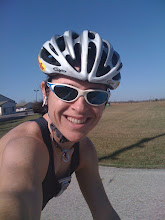Your ankle has a variety of movements that it can do. Plantarflexion and Dorsiflexion is the movement at your ankle as if you were pressing down on the gas pedal of your car. Plantarflexion is the movement of the ankle where the toes move away from the front of the leg. Dorsiflexion is bending the foot back at the ankle so that the toes move closer to the front of the leg. The ankle is also able to perform Adduction and Abduction. These terms refer to the movement of the foot out and away from the mid-line of the body and movement in towards the mid-line of the body at the ankle joint. The ankle joint can also perform Inversion and Eversion. Just think of Inversion as the action of turning the bottom of the foot in as if you wanted to see if you stepped on gum. Eversion is turning the bottom of the foot out away from the mid-line of the body.
Your toes have several ways to move as well. The toes can be flexed down or extended up as well as fanned apart, sometimes called abduction. The toes need to be stretched as well because they are connected to the smaller anterior and posterior muscles of the lower leg.
You might want to have a yoga strap, a small towel, a chair, and either a step box or the last step on a flight of stairs to assist you with your stretching. Stretching can be done with a partner but make sure your partner is familiar with the stretches and understands your range of motion.
Stretches to include in your repertoire:
- Gastrocnemius Stretch--This stretch can be done standing, with a yoga strap or towel, or off the edge of a step. The important thing to remember is to keep the knee joint extended. This stretch will be felt higher in the back of the lower leg and just below the knee joint.
 Soleus Stretch--This stretch is similar to the Gastrocnemius Stretch however the knee joint will need to be slightly bent so that the stretch can be felt lower in the leg and more towards the Achilles Tendon.
Soleus Stretch--This stretch is similar to the Gastrocnemius Stretch however the knee joint will need to be slightly bent so that the stretch can be felt lower in the leg and more towards the Achilles Tendon. Gastroc and Soleus Stretches with Inversion and Eversion--Aiming the toes in to the mid line of the body and away from the mid line of the body will provide stretch to the Anterior and Posterior Tibialis muscles as well as the Peroneus Tertius, Peroneus Longus, and Peroneus Brevis which are located along the outer side of the lower leg.
Gastroc and Soleus Stretches with Inversion and Eversion--Aiming the toes in to the mid line of the body and away from the mid line of the body will provide stretch to the Anterior and Posterior Tibialis muscles as well as the Peroneus Tertius, Peroneus Longus, and Peroneus Brevis which are located along the outer side of the lower leg. Seated Foot Stretches for Foot Inversion and Eversion--This is another method of targeting muscles noted in #3. Remember you will want to turn the bottom of the foot up for the Inversion Stretch and then turn the foot so that the bottom of the foot aims more towards the floor.
Seated Foot Stretches for Foot Inversion and Eversion--This is another method of targeting muscles noted in #3. Remember you will want to turn the bottom of the foot up for the Inversion Stretch and then turn the foot so that the bottom of the foot aims more towards the floor. Toe Flexion Stretch--By curling the toes under the foot, this stretch targets the Flexor Digitorum Longus and the Flexor Hallucus Longus.
Toe Flexion Stretch--By curling the toes under the foot, this stretch targets the Flexor Digitorum Longus and the Flexor Hallucus Longus. Toe Extension Stretch--When the toes are pulled back, this stretch focuses on the Extensor Digitorum Longus and the Extensor Hallucus Longus. This stretch can also relieve tightness in the bottom of the foot.
Toe Extension Stretch--When the toes are pulled back, this stretch focuses on the Extensor Digitorum Longus and the Extensor Hallucus Longus. This stretch can also relieve tightness in the bottom of the foot.
 You will find it helpful to practice these stretches on a regular basis to increase range of motion and flexibility of the ankle joint. For more ideas on how to gain ankle mobility there are a few books that you can refer to:
You will find it helpful to practice these stretches on a regular basis to increase range of motion and flexibility of the ankle joint. For more ideas on how to gain ankle mobility there are a few books that you can refer to:Stretching Anatomy by Arnold G. Nelson and Jouko Kokkonen
The Whartons' Stretch Book by Jim and Phil Wharton
Anatomy of Movement by Blandine Calais-Germain
Next week we will look at some strengthening exercises for the knee joint.
Enjoy!
Liz




1 comment:
hey your blog design is very nice, neat and fresh and with updated content, make people feel peace and I always enjoy browsing your site.
- Murk
Post a Comment